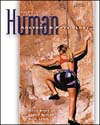 |  Hole's Human Anatomy & Physiology, 9/e David Shier,
Washtenaw Community College
Ricki Lewis,
The University at Albany
Jackie Butler,
Grayson County Community College
Introduction to Human Anatomy and Physiology
Chapter OverviewThis chapter begins the study of anatomy and physiology by defining the disciplines
(objective 1), and explaining the characteristics and needs that are common
to all living things (objectives 2 and 3). It introduces a basic mechanism necessary
to maintain life (objectives 4 and 5), as well as the relationship of increasingly
complex levels of organization in humans (objective 6). The study of levels
of organization continues with the identification of body cavities and the organs
found within each cavity (objectives 7 and 8). The membranes associated with
the abdominopelvic and thoracic cavities are described (objective 9). The functions
of the various organ systems as well as the organs associated with each system
are described (objectives 10 and 11). Finally, the language used to describe
relative positions of body parts, body sections, and body regions is presented
(objective 12). This chapter defines the characteristics and needs common to all living things
and the manner in which the human body is organized to accomplish life processes.
The language peculiar to anatomy and physiology is also introduced. |
|



 2002 McGraw-Hill Higher Education
2002 McGraw-Hill Higher Education